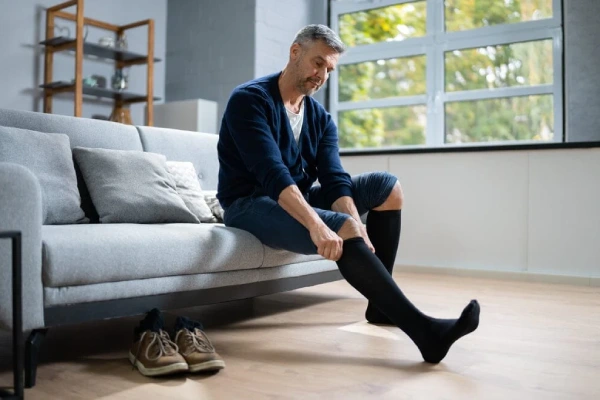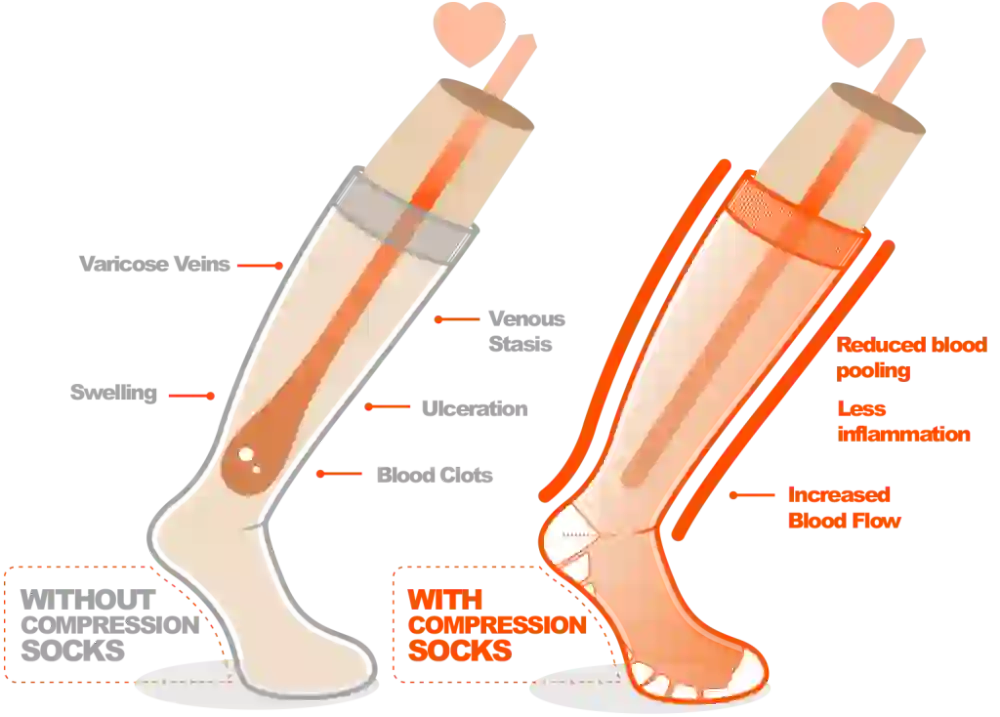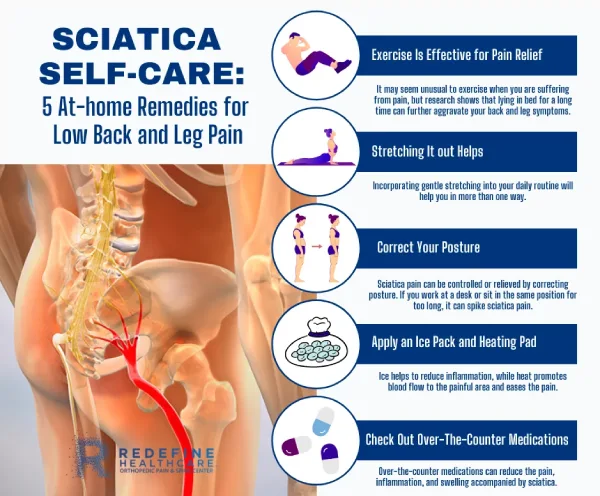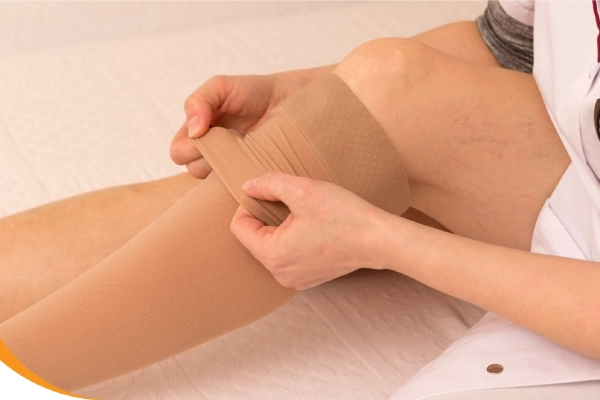The Real Role of Compression Socks in Sciatica Relief

Sciatica is a common condition affecting millions worldwide, with many sufferers experiencing sharp, radiating pain that travels from the lower back down through the leg. This leg pain often becomes the most challenging symptom to manage, especially during daily activities such as walking, standing, or sitting for long periods.
For brands and retailers in the sock industry, sciatica represents a growing market opportunity. However, there is often confusion about the role of compression socks in relieving sciatica symptoms. Compression socks are not a cure for nerve compression or spinal issues. Instead, they can serve as a supportive aid that eases some of the secondary symptoms associated with sciatica, particularly those involving leg discomfort.
This guide focuses on clarifying the realistic benefits of compression socks for sciatica-related leg pain. We will explore how these socks work, their limitations, design considerations, and market potential. By understanding these aspects, brands can better tailor products and messaging to meet the needs of consumers seeking relief from sciatic leg pain.
What Is Sciatica and Why Does It Cause Leg Pain?

Sciatica refers to pain caused by irritation or compression of the sciatic nerve, which is the longest nerve in the human body. This nerve runs from the lower back, through the buttocks, down the back of each leg, all the way to the feet. When the nerve is pinched or inflamed—often due to a herniated disc, spinal stenosis, or muscle tightness—it can trigger symptoms along its pathway.
The hallmark of sciatica is leg pain that often starts in the lower back or buttock and radiates down the thigh, calf, and sometimes into the foot. Patients typically describe this pain as sharp, burning, or shooting. In addition to pain, some experience numbness, tingling, or muscle weakness in the affected leg.
Because the pain and other symptoms occur along the leg, addressing leg comfort and function becomes critical. This is where compression socks come into the picture. While they cannot treat the nerve compression itself, compression socks can support leg circulation and muscle stability, which may help ease some of the leg-related discomfort associated with sciatica.
Understanding this leg-focused symptom profile helps brands recognize the importance of designing socks that specifically address circulation, swelling, and muscle support in the lower limb.
How Compression Socks Support Sciatica Symptoms

How Improved Circulation Helps Leg Pain
Compression socks apply graduated pressure—stronger at the ankle and gradually decreasing up the calf. This design promotes better venous and lymphatic blood flow back toward the heart. For people with sciatica, improved circulation can reduce swelling and inflammation in the leg tissues, which often contribute to nerve irritation and increased pain.
When leg swelling decreases, there is less pressure around nerves and surrounding muscles, potentially easing some of the secondary discomfort linked to sciatica. This effect is especially beneficial for individuals who spend long hours sitting or standing, as poor circulation tends to worsen symptoms.
Muscle Support and Stability
Compression socks also provide gentle support to the muscles and joints of the lower leg. By reducing muscle vibration and unwanted movement during walking or standing, compression helps minimize additional strain on already irritated nerves.
This stabilization can improve walking comfort and reduce fatigue, helping sciatica sufferers maintain better mobility. Enhanced muscle support may also prevent compensatory movements that sometimes worsen sciatic symptoms.
When Compression Socks May Not Be Enough

Compression socks can support sciatica-related leg discomfort—but they’re not a cure. Being transparent about their limitations helps your brand build credibility.
What compression socks cannot do:
- They don’t treat the root cause of sciatica, such as spinal compression or disc herniation.
- They’re not a substitute for medical care or physical therapy.
Risks if used incorrectly:
- A poor fit may reduce effectiveness or even cause discomfort.
- Socks that are too tight may restrict blood flow.
- Too loose? They won’t apply therapeutic pressure.
⚠️ Important note: For individuals with conditions like peripheral arterial disease or severe neuropathy, compression socks may not be safe without a doctor’s supervision.
Designing Compression Socks That Work for Sciatica Relief

Compression socks for sciatica relief should combine clinical principles with all-day comfort. Here’s what to focus on when developing the product:
Key functional elements:
- Graduated compression: 15–20 mmHg or 20–30 mmHg, strongest at the ankle, lighter toward the calf—this supports venous return and reduces swelling.
- Stabilized zones: Reinforced calf/ankle areas reduce muscle vibration and support smoother movement.
Material considerations:
- Breathable, moisture-wicking yarns (nylon, spandex blends, or Merino wool)
- Seamless toes and cushioned soles to reduce friction and pressure points
- Soft cuffs to prevent marks and enhance comfort
Bonus features for brand differentiation:
- Antimicrobial or anti-odor treatments
- Travel-ready or discreet packaging for professionals and commuters
- Custom sizing or color options for niche markets (e.g., elderly care, maternity, athletes)
Market Potential for Sciatica-Targeted Compression Socks

The demand for functional compression socks that support sciatica-related leg symptoms is increasing. Several factors drive this growing market opportunity:
- Rising Awareness: More consumers recognize the benefits of compression therapy for leg discomfort, especially those with sedentary lifestyles, aging populations, or mobility challenges.
- Underserved Niche: While many products focus on back support or general compression, few brands specifically address sciatica-related leg pain. This leaves room for differentiation.
- Target Consumer Groups: Office workers, seniors, frequent travelers, healthcare professionals, and athletes all represent key segments who may benefit from specialized compression socks.
- Brand Differentiation: Offering compression socks tailored for sciatic leg support allows brands to stand out in the crowded hosiery market by highlighting functional benefits tied to a common health concern.
- Data-Backed Growth: Market research and keyword trends show increased searches and sales related to compression socks and nerve pain relief, signaling strong commercial potential.
For retailers and brands, investing in this segment means meeting clear consumer needs with evidence-based products, positioning themselves as trusted partners in wellness.
How Compression Socks Fit Into the Sciatica Conversation

Compression socks don’t treat the root cause of sciatica, but they can ease leg pain, numbness, and fatigue. For many, they’re a helpful addition to daily care when paired with medical advice.
For brands and retailers, functional socks that address leg discomfort are becoming a clear market need.
If you’re looking to launch or expand your compression sock collection—especially one that meets the functional needs of sciatica sufferers—our factory offers OEM and ODM solutions tailored to your market. We help brands design compression socks with the right pressure levels, anatomical fit, and comfort-focused yarns.
Let’s turn customer discomfort into your product opportunity.
Contact us today to start your custom compression sock project.
FAQs
Do compression socks cure sciatica?
No. Compression socks don’t cure sciatica because they don’t address the spinal nerve root cause. However, they may help manage symptoms like leg swelling, fatigue, and poor circulation.
What pressure level is best for sciatica-related leg discomfort?
Moderate compression (15–20 mmHg) is usually sufficient for symptom relief. Higher levels (20–30 mmHg) should only be used under medical supervision.
Are there specific materials that work better for sciatic pain relief?
Yes. Breathable, moisture-wicking, and stretch-friendly fabrics like nylon blends or Merino wool help reduce discomfort during long wear.
Can compression socks prevent sciatica from worsening?
They cannot prevent worsening directly. But by improving leg blood flow and reducing inflammation, they may support overall mobility and comfort, especially for those with sedentary lifestyles.
Can I create my own brand of compression socks for this segment?
Yes. Our factory offers full support for OEM/ODM projects. You can customize yarn, compression level, sizing, packaging, and even develop medically informed sock designs targeting this use case.
